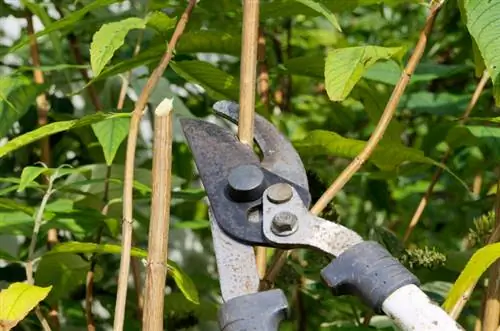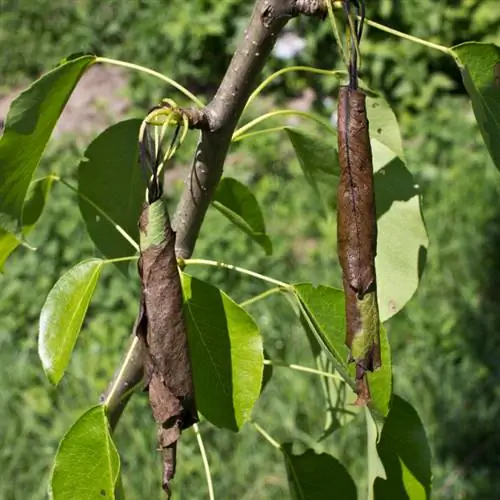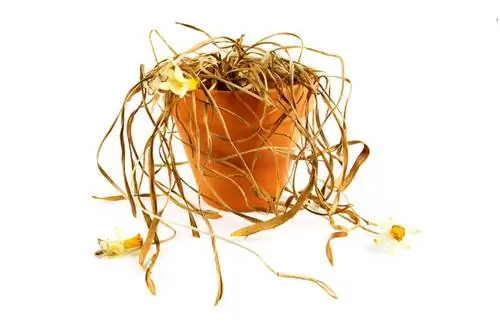- Author admin [email protected].
- Public 2023-12-16 16:46.
- Last modified 2025-01-23 11:20.
Properly cared for, a butterfly bush is resistant to plant diseases. If the flowering tree is in distress as a result of poor weather conditions or neglect in care, vulnerabilities become apparent. The focus is on two diseases. You can read about what these are, how the symptoms appear and how to act correctly here.

What diseases occur in butterfly lilac and what can I do about it?
The most common diseases of butterfly lilac are downy mildew and narrowleaf. Removing infected plant parts, field horsetail decoction and root irrigation help against downy mildew. Narrowleaf is caused by viral infection and requires radical pruning or clearing of the affected plant.
Bad weather causes downy mildew
As long as your butterfly bush can enjoy sunny summer weather, everything is fine. In connection with wet and cold weather, cunning fungal spores take advantage of the opportunity. Downy mildew causes a gray fungal growth on the undersides of leaves, while yellow spots spread on the upper sides of the leaves. How to combat the common disease:
- Cut off all affected plant parts and dispose of them in household waste
- Spray the infected butterfly bush repeatedly with a decoction of field horsetail
- Don’t give any more nitrogen-based fertilizer
- For water supply, stop sprinkling, but pour directly onto the root disc
- Mulching with bark mulch, leaves or dried grass clippings
There are various fungicides available in specialist stores that are approved for use in the home garden. These include, for example, mildew-free from Compo (€10.00 at Amazon), universal fungus-free from Bayer Garten, copper-lime Atempo or Netz-Sulfurite. A sunny, airy location where rain-damp leaves can dry quickly has a preventative effect.
Narrow-leaved leaves require immediate action
If a plant in the garden is attacked by viruses, there is little hope of a cure. Rather, the focus is on timely countermeasures to prevent further spread. If the leaves on your butterfly bush are curling, a tombus virus infection is suspected. If a yellowish mosaic pattern also spreads across the foliage, proceed as follows:
- In the early infestation stage, cut the bush back to 20 cm
- Stop giving nitrogen fertilizer and care for it carefully
If curled, yellowish leaves appear on the new shoots, you can no longer avoid clearing them. To prevent the viruses from spreading again from the compost, please dispose of the plant remains in the household waste.
Tip
Frost damage to a butterfly bush looks very similar to disease symptoms. Do shoots and young leaves appear wilted and dead after a frosty night? Then it is not an illness, but frostbite. By radically cutting the branches back to he althy wood, the butterfly lilac will regenerate quickly.






